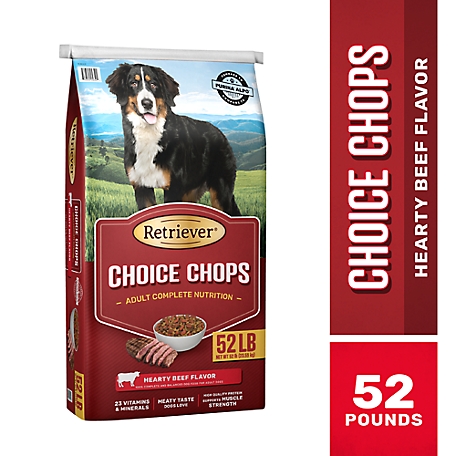AMERICAN JOURNEY Peanut Butter Recipe Grain-Free Oven Baked Crunchy Biscuit Dog Treats, 8-oz bag
Dry roasted peanuts give this treat a real peanut butter flavor that your dog will love. Oven baked to a perfectly crunchy texture so they pack a satisfying crunch that dogs crave in every bite. Grain-free dog treats that are also free of fillers like corn, wheat and soy. Made without any poultry by-product meal, artificial colors, flavors or preservatives.
American Journey Peanut Butter Recipe Grain-Free Oven Baked Crunchy Biscuit Dog Treats are grain-free, crunchy snacks sure to please your pup whether you’re both on the go or right at home. Small but full of flavor, these bite-size treats are made with wholesome ingredients that will keep your pup energized for any daily adventure ahead. Every bite is packed with the crispy crunch that could only come from a treat that’s perfectly baked right in the oven! Real peanut butter is baked right with wholesome peas and chickpeas. And these naturally preserved, filler-free treats are also free of poultry by-product meal and artificial colors, flavors and preservatives. Treat your dog to quality and taste with American Journey Grain-Free Oven Baked Treats.
- Dry roasted peanuts give this treat a real peanut butter flavor that your dog will love.
- Oven baked to a perfectly crunchy texture so they pack a satisfying crunch that dogs crave in every bite.
- Grain-free dog treats that are also free of fillers like corn, wheat and soy. Made without any poultry by-product meal, artificial colors, flavors or preservatives.
- Nutritious chickpeas take the place of grains to round out this tasty dog treat.
- Portable and small enough to fit in your pocket, these bite-size dog treats are perfect for on-the-go or anytime treating.
Additional information
| Ingredients | Chickpeas, Peas, Peanut Butter, Cane Molasses, Chicken Fat (Preserved with Mixed Tocopherols), Rosemary Extract. |
|---|---|
| Caloric Content | 3,250 kcal/kg or 13 kcal/biscuit (calculated) |










by Sher
Perfect for training my dog!!! When we walk she gets a treat once we are done and she sits for cars and people to go by she gets treats!!! Love them!!
by Kathy
This treats are the perfect size for training your dog. My three dogs love them so much they will do tricks for them. Will be ordering them again.
by Dally
My sweet Dally loved these! Everything to her is a cookie, so when I tell her it’s time for a cookie she gets these treats! I will definitely order these again!
by Brendy
These treats are perfect for my dogs. My dogs like them. They are grain free and good for my one dog with diabetes.
by Treats
They love these little treats. We use them before we leave everytime too.
by Laurielea
I buy a variety of grain free treats and my dogs like these. They are too big for my little dog, but the right size for large dogs. I think they’re reasonably priced.
by Bonnie
All I can say is that of all the treats that have come into this house, none are as popular as these. They absolutely gobble them down.